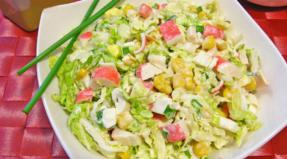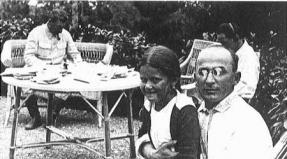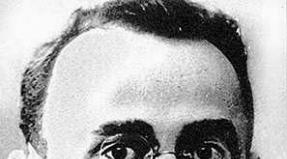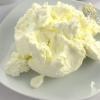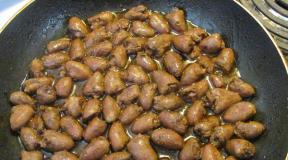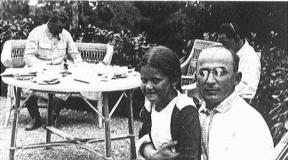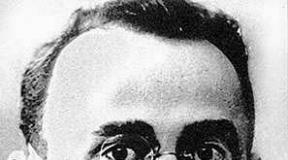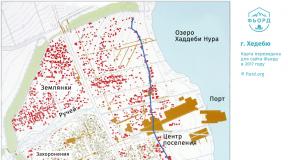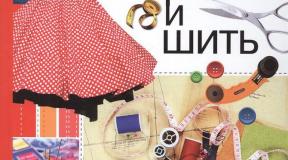All about Subaru Outback 3rd generation. Subaru Outback III - model description. Spacious trunk with power tailgate
Subaru Outback 3 was produced from 2004 to 2009. Like the previous two, the third generation of the Outback model was produced in station wagon and sedan body styles. The model was produced at Subaru factories in Japan and the USA.
History of creation
The third generation Outback was presented in 2003 at the Frankfurt Motor Show and the Tokyo Motor Show. America became acquainted with the car in 2004 at the Chicago Auto Show.
The car has become larger, but lighter. The suspension has become softer, and ground clearance has been increased to 213 mm on standard models and to 220 mm on models with 6-cylinder 3-liter engines.
Body rigidity has been increased through the use of new reinforced frames. The shape of the headlights, radiator grille and front bumper has changed. Overall, the body has become more streamlined.
In 2007, the car was modernized. First of all, the changes affected the design - optics, radiator grille, bumpers, trunk lid. The rear lights now have a chrome strip and a transparent lens. The center console has changed and separate climate control has been installed. The 2.5-liter gasoline engine was also modernized, increasing its power from 165 hp. up to 173 hp
In 2008, a 2.0 liter turbodiesel engine with a power of 150 hp began to be installed on the Outback. and the EyeSight security system. This system consists of two cameras on each side of the interior rearview mirror and a control unit that interacts with the brake system. EyeSight estimates the distance to the car ahead and can slow down the car if it gets too close.

Production of the car was discontinued in 2009, when it entered the market.
Technological features
A distinctive feature of the new generation is the proprietary engine control system - Si-Drive (Subaru Intelligent Drive). Three engine operating modes, Intelligent, Sport and Sport Sharp, allow you to completely change its “character”. Intelligent mode provides greater traction at low and mid-range speeds, which is suitable for comfortable driving in urban environments and reduces fuel consumption. Sport and Sport Sharp modes are designed for more aggressive driving. The system is installed only on cars with a three-liter V6 engine producing 245 hp.
In addition, compared to the previous generation, the model’s center of gravity has shifted due to the lower location of the engine.
The level of safety has increased due to the installation of active head restraints and a new design of front seat belts with electric tensioning mechanisms and load limiters.
Subaru Outback 3 won the American Alcan Rally race, driving from Seattle to the Arctic Circle and back
Among the car modifications, the Outback L.L. stands out. Bean, produced for the US market. Options that were installed additionally on other models were installed as standard: a 6-cylinder engine, an MP3 stereo compatibility port, a leather steering wheel and seats, GPS navigation, and a sunroof. The name of the modification was assigned after signing a contract with American company, which produces clothing and accessories for sports and leisure L.L. Bean. She became the official “outfitter” of this model.
The most environmentally friendly 2.5-liter Subaru Outback III models produced for the American market have been certified as "partially zero-emission vehicles." Such cars were distinguished by the location of the company sign in the lower right corner of the rear door. All other models were certified as "low emission vehicles" (abbreviation PZE V).
The Subaru Outback 3 won the American Alcan Rally (the route from Seattle to the Arctic Circle and back) in 2006, the second generation Outback model also won this race four years earlier.
Compared to classmates
The driver's seat in the Subaru Outback III is one of the most comfortable in the class, but there is not much space for rear passengers. Sound insulation in Subaru and, for example, in, is approximately at the same level, but another competitor can no longer boast of this. Nothing in the Outback's interior interferes with visibility, although the model's mirrors are the smallest among its rivals.
Acceleration to “hundreds” for the Outback version with a six-cylinder engine takes longer than competitors with the same power units, but in terms of handling, the “Japanese” has no equal.
Numbers and awards
The third generation Subaru Outback was awarded the title of “Car of the Year” by the British magazine Top Gear in 2007.
The car received 5 stars for safety according to EuroNCAP tests.
For every hundred cars stolen in Russia, there were an average of four Outbacks.
According to the Australian ANCAP method, the model also earned 5 stars, but received two comments: the load on the chest and shins of the driver and front passenger was slightly higher than normal. The vehicle has a 15% chance of rollover, according to American Highway Safety Administration tests.
From 2005 to 2008, Subaru Outback III was in 40th place in the ranking of thefts in Russia - for every hundred cars stolen, on average, there were four crossovers of this model.
Subaru Outback. Price: 2,190,000 rub. On sale: since 2015
Automotive progress, like any other, is an inevitable process. Every year, according to the logic of things, everything unnecessary and outdated should be cut off in cars, and everything new and technologically advanced, on the contrary, should be acquired.
The Outback can rival larger crossovers in terms of second-row comfort.
Surprisingly, after years natural selection the population of such a seemingly successful species as the “off-road station wagon” never reached a new level. Today, like a decade ago, we still have the same unchanged trinity - Volvo XC70, Audi A6 Allroad and a class veteran - Outback. They can only keep company with the Octavia Scout, Audi A4 Allroad and the very fresh Volvo V60 Cross Country, although both of them are sold extremely poorly in Russia. The main reason, perhaps, lies in the fact that in the price segment of the above-mentioned class representatives, the buyer can find a much more diverse family of larger and more solid crossovers. Whether this is good or bad is not for us to judge.

Instrument scales can be illuminated in any of 9 colors to choose from
The new Outback, however, has something to oppose to the overpopulated SUV class: oh, and Subarov’s flagship has become prettier! After the unsightly fourth generation, perhaps, serious progress, especially considering that the truly beautiful cars in the entire history of the brand can be counted on one hand. The new “Outback” is a small victory of the Subarovites over themselves and for other reasons. If earlier each model felt the asceticism and simplicity characteristic of most Asian models, now the “out” has come close to the “Europeans” - the quality, style and functionality of the interior have also moved to a new level.

The third generation Outback (BL, BP), which still looks modern today, turned out to be no less progressive in its time. By the way, it is the only one of all the Pleiades that was awarded the title “Car of the Year in Japan.” At the time of its appearance, when there was still a significant difference between SUVs and passenger cars, the car had almost no competitors: a passenger driver’s station wagon with the makings of a crossover! The model is still highly valued on the secondary market: it’s unlikely to find a “live” copy for less than 500–550 thousand rubles. My friend, whose car was included in the comparison, was lucky: Alexander purchased a 2004 Outback three years ago with a ridiculous mileage of 35 thousand km. Now the mileage has reached only 55 thousand, thanks to which both the technical filling and the body have almost not lost their original appearance.

The first thing that catches your eye when comparing the two cars is the size. The new “out” looks much more like a crossover: it is 85 mm longer, 70 mm wider and as much as 130 mm higher. However, due to the widespread and skillful use of high-strength steels in the body, the new product weighs only 118 kg more than its progenitor. But perhaps more differences await you inside - how much attention to detail has increased! Is that you, Subaru? Pleasant surprises await you already in the cargo compartment: the seats can be conveniently folded both from the passenger compartment and from the luggage compartment, and when folded, a perfectly flat floor is formed; the curtain, which usually has nowhere to go when the trunk is full, can be removed underground, and the shelf covering the spare wheel can be hung on a special hook. The roller itself can be used even when you are in a hurry: the estimated maximum speed indicated on the sidewall indicates a possible 210 km/h! And this is just the beginning - the passenger part of the cabin is no less impressive. The seating position here is quite high, and the pilot is enveloped in almost “Volvo” comfort - there is soft and high-quality plastic all around, pleasant-to-touch leather is present not only on the seats, but also on the interior panels, and the electronics control keys are logically placed and pressed with a pleasant force. It is equally important that Subaru is now keeping up with the times in terms of on-board electronics: the top-end Harman/Kardon audio system with 12 speakers sounds noble, the multimedia is modern and convenient, and the touch screen, although still not up to par with Android, , but pleases with its excellent responsiveness, thoughtful menu and successful graphics. The back row is no less comfortable and very spacious: an optimal angle of inclination of the backrests, a good profile of heated seats, and the presence of separate air deflectors.

The interior of a Subaru has never been so high-quality and solid, but the driving position is now more crossover - especially compared to the more spartan, but at the same time more driver-friendly third Outback.
The Outback III is...different in comparison! Completely different! It’s as if these cars belong not only to different classes, but also to different brands. Of course, it’s a matter of age, dimensions, and, in the end, a different ideology: the finishing materials here come from the late 1990s, there are some mistakes in ergonomics (for example, the power window unit is located extremely inconveniently, the automatic selector is in the P blocks access to climate control), and the back row is cramped even by golf class standards. But this is only static, because in motion a station wagon can shake confidence in modern trends in the automotive industry.

The first thing that captivates me is the landing: this is the first car without adjustable steering wheel for reach, in which I managed to find the ideal position! You sit low, like a car; the seats, although they look rustic, are perfectly profiled; The small momo steering wheel is located almost vertically and close to the pilot, towards whom the center console is neatly turned. Yes, the 4-speed automatic transmission here is not “intelligent and quick-witted”, which is why the lighter old Outback gains a hundred 0.7 seconds slower than the new one, which is not very noticeable on the move.

The media system is fast and modern, and the soundtrack doesn’t lag behind
Despite the fact that the engines here are of different generations (the third Outback has a two-shaft EJ25, the new one has a four-shaft FB25), their characteristics are extremely close: the same 2.5 liters with similar power indicators. The main difference between them is, perhaps, the “passport” efficiency: the new Outback should consume 1–1.5 liters less. In practice, it turned out the other way around: the average consumption of the third Outback was about 10–11 liters, while the newcomer did not fall below 12. I attribute this feature to the CVT’s love for high “torque” revolutions: where a 4-speed automatic rolls at 2000 rpm, the variator often holds 3-4 thousand. Although the Lineartronic wedge-chain variator itself is very good: responsive, pleasing with adequate performance, although sometimes harsh when starting from a standstill.

The luggage curtain can be hidden under the floor
The transmissions are essentially similar: both models have permanent drive to the front wheels, and the rear wheels are connected automatically using clutches. As you move, the torque distribution begins to change: in the new Outback, for example, in normal conditions torque distribution between the front and rear wheels is 60:40. The main differences are in the progressiveness of the control electronics: for example, to improve the handling of the new Outback, an electronic imitation of the front cross-axle differential lock is intended, which helps to “pull” the car into turns by braking the inner wheel. In turn, the tested version of Outback III does not even have a stabilization system. And if it weren’t for the smart electronics of the new product, which has the X-Mode function in its arsenal (the system optimizes the operation of the engine, transmission and brakes for off-road driving), then on off-road the rivals would be equal: here the advantage belongs to the new Outback.

In terms of convenience, the CVT is almost as good as an automatic transmission, although sometimes it is harsh
On a straight line, the Subaru are close: both have excellent directional stability on any surface and are not susceptible to ruts. But on winding sections, especially if it is rough terrain, differences appear: the newcomer behaves like a thoroughbred and well-built crossover, delighting with an energy-intensive and soft suspension, but still allows itself a diagonal swing on the surface waves and moderate rolls in corners. The suspension of the Outback III also pleases with its energy intensity, but due to the compact body and lighter suspension it still behaves more recklessly: the swing is less, and the reactive force on the steering wheel (there is a hydraulic booster here) is more transparent than the “electric” one on the new Outback.

As for cross-country ability, the station wagons would be equal here, if not for the more advanced electronics of the newcomer: the X-Mode off-road assistance system really helps out

So where has progress led us? One thing is certain: the overall level of comfort has increased many times over in all directions: Outback has become more advanced, safe and easy to use. But the old “Outback” in the age of digital technology does not look like a relic of the past, but is rather perceived as a pleasant anachronism - the “driver car” ideology is still closer to it.

The luggage compartment is both larger and more thoughtful than the Outback III



Despite the fact that the engines here are of different generations (2-shaft EJ25 - on the Outback III, 4-shaft FB25 - on the new one), their characteristics are close
|
Driving A fairly balanced chassis that allows you to move comfortably both in the city and on rough terrain. The motor would be more powerful...
* Transport tax is calculated in Moscow. The cost of TO-1/TO-2 is taken according to the dealer. OSAGO and comprehensive insurance are calculated based on one male driver, single, age 30 years, driving experience 10 years. VerdictThis is still a wonderful utilitarian car, successfully combining a passenger station wagon and an SUV. And how the level of comfort and equipment has increased! But the price of inevitable evolution was the loss of a piece of the driver’s ambitions. Which, of course, is not fatal, but causes slight sadness about the past. | ||||||||||||||||||||||||||||||||||||
We learned a lot about the practicality of this big station wagon, technical specifications and capabilities, which at first glance do not shine with exorbitant performance, but organically fit into the purpose that was originally intended for this car.

We appreciated the thoughtful design and the efforts of the engineers to please a wide range of car owners in one car. Everyone can easily find something in it, some people like roominess and cross-country ability, the Outback 2015 has these qualities, others want to look stylish while driving a purchased car, and they didn’t miss a beat here, Subaru made a high-quality, stylish and beautiful car. There was only one flaw found in the entire car, the engine.
The most profitable car in 2013

The boxer 2.5i is not exactly the engine you expect to see under the hood of a modern car costing more than 1 million rubles. It’s not that the engine has any flaws or problems, but the power... the power of this four-cylinder unit is not very high. Acceleration is accordingly, from 0-100 km/h in 9.2 seconds.

And what's so special about this, you ask? What is the problem, acceleration fits well into the concept of a slow modern car. This may be true, but for those who like cars that “do” 100 km/h in less than 8 seconds, you should think about purchasing the Outback 3.6R. As the name of the engine suggests, it already has a volume of 3.6 liters. Its six cylinders, 256 hp. and 334 Nm already fits much more organically into the overall concept of a modern dual-purpose vehicle.

The 2015 3.6R is certainly faster than the 2.5i, reaching 100 km/h in 7.3 seconds, beating its less powerful brother in the sprint by almost 2 seconds. But no matter how strange it may sound, the four-year-old model with the same engine remained faster; in 2010, the Outback needed exactly 7 seconds to show 100 km/h on the speedometer. How is this possible? Why more modern version(which means more advanced) of the same car with identical engines slower than the outgoing model. The answer is simple, modern technologies and the increase in the dimensions of the car played a bad joke on it; the 2015 car gained 90 kg and immediately began to lose in dynamics.

The difference will be more obvious the further the 2015 and 2010 model year vehicles travel. A station wagon with a 3.6 engine runs the quarter mile in 15.7 seconds, with a top speed of 146.7 km/h. The difference in dynamics between the two models will be already 0.4 seconds, of course there is nothing to worry about, you can feel it without measuring instruments almost unreal.

But in figure-eight testing and braking from 100 km/h, the 2015 3.6R did better. In the first testing, the 2015 model year Outback completed the figure in 28 seconds with an average g-force of 0.61 g, the result of the previous model was 28.6 seconds and slightly higher g-forces. Again, the difference in numbers is not great, but one way or another it is present.

It is also significant that despite the total superiority in power, the six-cylinder Outbacks could not surpass the Outback 2.5i in the performance of the same figure. The 2.5i passed the test in 26.3 seconds, proving to be very agile.
Subaru Forester, Legacy and Outback receive top safety awards from IIHS

The 2015 model also had a shorter braking distance; from 100 km/h the car stopped in 39.3 m. The result of the Outback 2010 is a little more modest, 39.9 m. The 2.5i outperformed both here, 36.58 meters. Why does this happen? Both 2015 cars had identical tires (225/60R18 Bridgestone Deller H/P Sport AS), so the tires could not affect the results. Most likely, the source of the differing results should be sought in the weight of the cars. The 2.5i is lighter than the 3.6i, with the engine under the hood also weighing less, so the first copy has better weight distribution and better testing performance.

In real-life normal driving conditions, it is difficult to find differences in how cars with 2.5 and 3.6 liter engines drive. Both provide a comfortable ride feel and feel great on twisty roads. The CVTs, as expected, shift gears without jerking without annoying unnecessary twitching, and the huge interior clearly speaks of the intended purpose of these large station wagons. You can easily comfortably seat a family of 5 people in them (the rear seats are among the most spacious in their segment), load as many things as necessary into the luggage compartment and go on a long journey without the fear of sitting down somewhere along the road far from civilization.

Efficiency 2015 Subaru 3.6R
The 2.5i option is naturally more economical. With a 3.6L engine, the 2015 Outback consumes 11.7 liters in the city and 8.7 liters/100 km on the highway. The 2015 Outback 2.5i gets 9.4 mpg in the city and 7.1 mpg outside the city, respectively.

Bottom line
Overall, the 2015 Subaru Outback is a strong contender in a highly competitive segment. The new generation may look a little less aggressive and domesticated, but the Outback remains a truly good replacement for standard crossovers.

